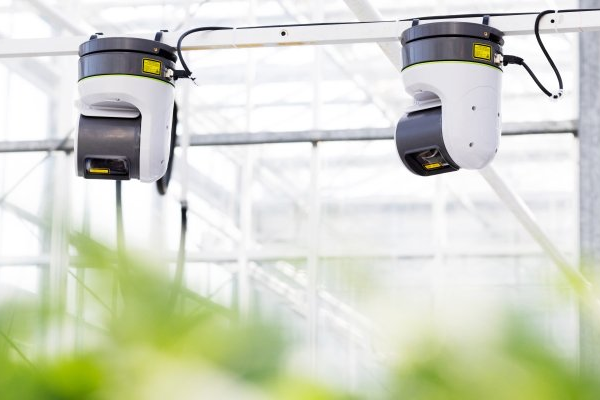In a few months, it will be clear which team wins the Autonomous Greenhouse Challenge and thus has developed the best AI algorithm for an autonomously controlled cultivation of dwarf tomatoes. In parallel with the participants, a team of WUR experts also set up a greenhouse for autonomously controlled cultivation. Researcher Pinglin Zhang explains the usefulness of this reference greenhouse and why the additional sensors and cameras deployed by the teams can also provide valuable knowledge for WUR.

In Bleiswijk, dwarf tomatoes are currently growing in five greenhouse compartments controlled by AI algorithms developed by the teams who participate in the Autonomous Greenhouse Challenge. A sixth compartment is also growing dwarf tomatoes but is controlled with input from a team of WUR experts. One of these is researcher Pinglin Zhang. 'Our compartment we also call the reference greenhouse. Cultivation here is also autonomously controlled but without AI algorithms. We set up the greenhouse as a regular grower would control the greenhouse. With this reference, we can make a good comparison between the results of greenhouses controlled with AI algorithms and a greenhouse controlled in a commonly used autonomous way.'
Additional sensors and cameras
Another difference is that, unlike the WUR team, the participants have been allowed to use additional sensors and cameras since this year, says Zhang. 'In all six compartments - so including ours - there are basic sensors, for example for measuring temperature and relative humidity inside the greenhouse and real-time weather conditions outside. On top of this, some teams have installed their own sensors and cameras. Think of a sensor that measures the weight of a pot. Or a thermal camera measuring the temperature around leaves and fruit. So the teams have more input they can use in control than we have in our reference greenhouse.'
Data processed by algorithm
The teams have developed their algorithm so that the data collected by the sensors and cameras is directly processed to make an optimal decision. Zhang: 'A low weight can indicate insufficient water, so the plant can be given extra water. You can also use information on weight to determine when to harvest. Just like the redness of the fruit that cameras record. Based on the teams' strategy, the algorithm calculates the harvest date. Whether this also ultimately leads to the most productive harvest with the best quality fruit will be seen at the end of the challenge.'
From greenhouse to plant level
As a researcher, Zhang deals with greenhouse technology for growing crops more efficiently and sustainably. 'Data from sensors can help growers optimize energy consumption for lighting, heat, and ventilation. Besides at the greenhouse level, I am also looking at sensors on a smaller scale. For example, in a project I am working on measuring the microclimate: the temperature and humidity around a plant. By placing sensors close to the plant, you collect data on local conditions. This can give an indication of, for instance, the presence of bacteria that can cause diseases. If you have that in view, you can intervene early.'
More focus on the plant
In the Autonomous Greenhouse Challenge, Zhang also sees an increasing focus on monitoring the plant with smart sensors and cameras. 'In the past, the focus was almost exclusively on greenhouse climate. That provides valuable data for controlling the greenhouse but gives less information on how the plant itself grows. While that is ultimately the most important thing for good production. Some teams in the Challenge really work with state-of-the-art technology. It is also very interesting and valuable for us as WUR to see the latest developments in sensors and cameras.'
Future of autonomous growing
Finally, how does Zhang envisage the future of autonomous growing? 'That depends on how you look at it. You have different degrees of autonomous control of a greenhouse. Autonomous climate regulation, for example, is already well embedded in greenhouses in the Netherlands and other Western countries. If you talk about autonomously defining growing strategies or applying robotic techniques to crop management, that is still fairly much in its infancy. That is one of the things we hope to explore further with the Challenge. How far we are exactly and whether fully autonomous growing is possible at all, we don't really know yet. That in turn makes this very interesting.'
Source: Wageningen University & Research
